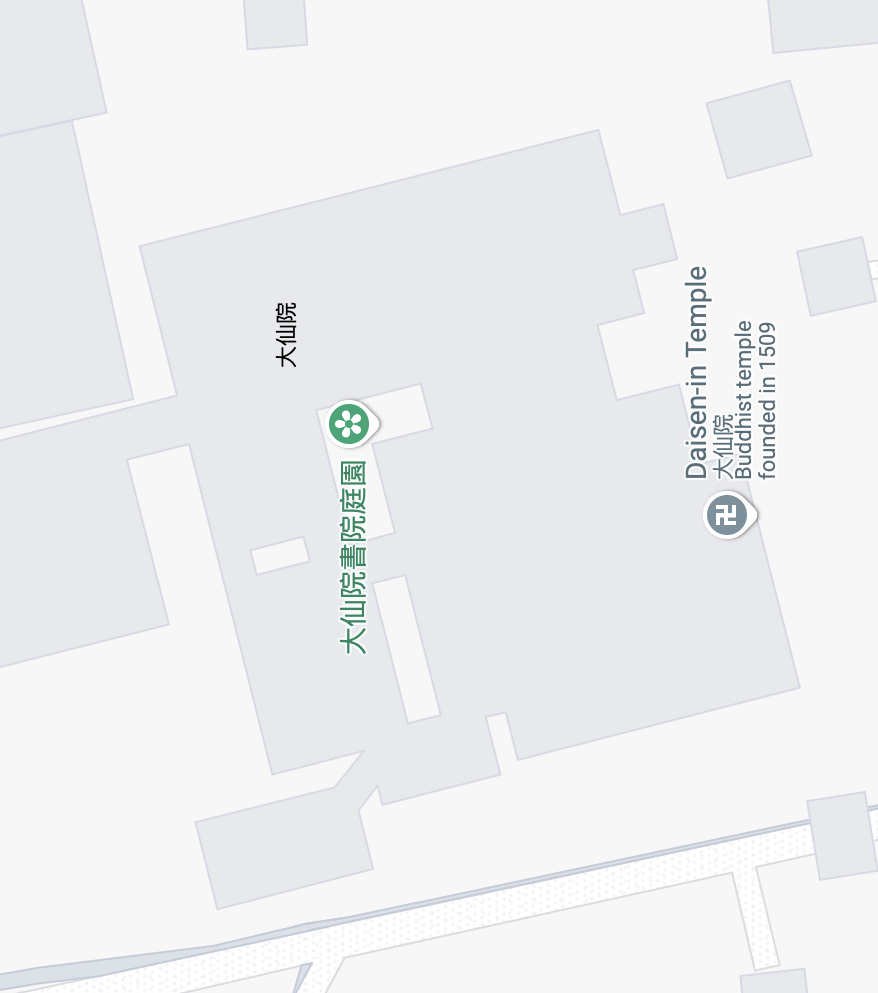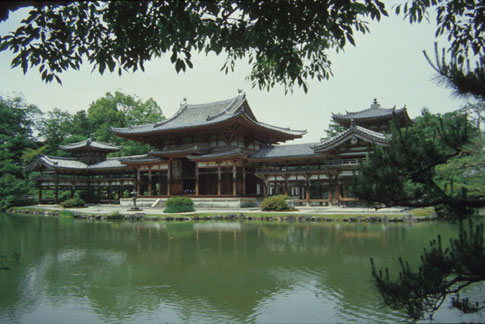
The Daisen-in was founded in 1509 by the Zen priest Kogaku Sotan (1464-1548) upon his retirement as abbot of Daitoku-ji. The hojo, his residence, was completed in 1513, and the most famous of the gardens that surround that structure probably dates from the same period. While the theory that other early Zen gardens were intended to imitate Chinese landscape paintings or their Japanese equivalents is open to question, there can be little doubt that this was the intention at the Daisen-in. The garden that flanks two sides of the hojo is a miniature landscape whose vertical rocks suggest the mountains from which a waterfall and its resulting river flow. Choose a view point from the map or click Tour the Garden for more views of this garden.
One of Japan's most famous Zen gardens is located in the Daisen-in (Great Hermit's Temple), a sub-temple of the main temple of Daitoku-ji in northern Kyoto. Daitoku-ji was founded in 1326 by the Rinzai Zen monk Shuho Myocho (1282-1337), later to be known as Daito Kokushi, whose honorific name it bears. Although almost all of its original buildings were destroyed in the wars of the fifteenth century, it was restored by the famous priest Ikkyu Sojun (1394-1481) and became the center of Rinzai Zen culture during the late Muromachi, Momoyama, and early Edo periods. It was particularly significant in the development of the tea ceremony and Zenga painting. Sen no Rikyu, considered the father of the modern tea ceremony, was one of many tea masters associated with Daitoku-ji, and the design of many of the tea rooms built on the temple grounds can be attributed to him. Over the course of time, the monastery acquired some of the most famous examples of Chinese Chan (Zen) painting. It is hardly surprising, then, that many of the leading Zen painters of the early Edo period were in one way or another associated with Daitoku-ji. The subtemple known as the Daisen-in was founded in 1509 by the Zen priest Kogaku Soko (1464-1548) upon his retirement as abbot of Daitoku-ji. The hojo, his residence, was completed in 1513, and the most famous of the gardens that surround that structure probably dates from the same period. Its design has been attributed to a number of persons: Kogaku himself, the painter Soami (the author of landscape paintings decorating the hojo), or an anonymous member of the kawaramono. The question of authorship is complicated by uncertainties regarding its original condition and position; there is evidence that part or all of the garden was moved in the sixteenth century, and at least one seventeenth-century text maintains that the elements of the garden were actually moved to Daisen-in from the estate of a contemporary daimyo. Its current appearance depends upon a restoration initiated in 1961.

This is the view of the building from across the pond.
